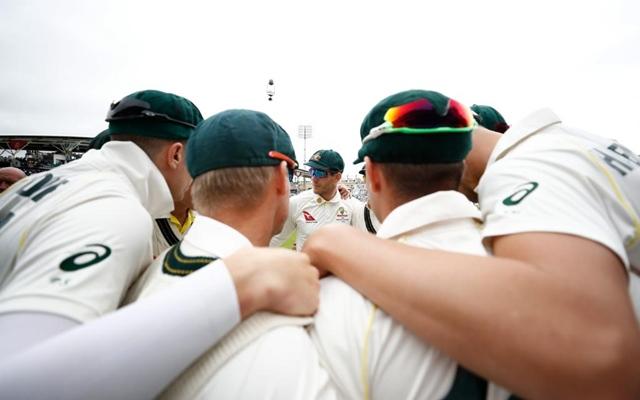India 2004 & England 2019: A byproduct of Australia’s great yearning and meticulous planning
England, on the other hand, lost their sheen in the Tests in a bid to win the World Cup.
View : 1.1K
2 Min Read


In 2001, Steve Waugh’s all-conquering Australian juggernaut masquerading as a cricket team came to India in the conquest of finally pulling the monkey off their back: beat India in India. Steve Waugh labelled it as ‘The Final Frontier’ for his side; a place no Australian side had won since 1969.
The first Test at Mumbai was just another stroll in the park for the Aussies- India was beaten inside three days at the Wankhede. But the brilliance of Harbhajan Singh with the ball, the magic of Laxman-Dravid ultimately denied Waugh (like a lot of his predecessors) from realizing his ultimate dream. A few months later, Waugh and his side would do what they had been doing in the past five Ashes: beat England wherever they saw them; in England, Down Under, anywhere to be honest. It was an era where losing to Australia was a part of English cricket’s DNA.
Cut to 2019 and Steve Waugh is still the last Australian captain to regain the urn on English soil. His successors- celebrated captains in Ricky Ponting and Michael Clarke– had led sides which had sometimes fought while on other occasions have withered away against the might of English conditions- supremely exploited by James Anderson & Stuart Broad and others- and the Dukes. So much so, that Ricky Ponting was amongst the first ones to argue that the Aussies needed to use the Dukes to prepare batsmen against the moving ball.
That suggestion came in the immediate aftermath of what was the nadir of all their failed Ashes campaigns in England since 2001. The 2015 Ashes. It was Michael Clarke’s last attempt at regaining the coveted urn on English soil but his side’s inability to deal with the moving ball; a trait that made them look like drunks blown away in an Autumn gale at Edgbaston [136 all-out] and then at Trent Bridge: 60 all-out; one that even left Stuart Broad bemused.
A change in approach
And, so in 2016, Cricket Australia announced that the first half of their Four-day tournament- Sheffield Shield- would be played with the Dukes. The introduction of the new ball and an increasing number of Aussie players competing in County Cricket was symbolic and an embodiment of the burning desire of Australian cricket to win in this part of the world- much like their drive of winning a Test series on Indian soil- ‘the final frontier’, a generation ago.
Australia’s triumph in India in 2004 was built on the same blueprint of meticulous planning and brilliant execution. They are no longer the force or a bunch of invincibles that they were back in 2004; in fact far from it. But the genius of Steven Smith coupled by England’s inability to dislodge the modern great and him, scoring more than 33 percent of the team’s runs followed by able support from his mirror-image Marnus Labuchagne masked the fragilities of the Aussie batting.
But despite the gulf between those two sides, a lot of things are strikingly similar: a wicket-keeper [more celebrated though, almost to the tune of a legend] leading the side; an injury [in this series case: Concussion] becoming an opportunity for a relatively unknown cricketer to unleash his talent at the top-level [Clarke then, Labuschagne, who was one the leading scorers for Glamorgan in the county championship, now], and of-course their factory of fast bowlers.
While the pace, hostility and most-importantly the relentlessness of McGrath, Gillespie, and Kasprowicz did the trick for the Aussies in nailing the ‘final frontier’, fifteen years later the faces have changed but the story has been eerily similar.
The hostility of Cummins, the relentlessness of Hazlewood, the fire of Pattinson and Starc, the wobble of Siddle, backed by a robust plan of managing their workload, ultimately proved to be too hot to handle for an English side, who, like their opponents have done the same (robust planning) in white-ball cricket, albeit at the expense of their Test side; so clearly illustrated in this series.
And, the results during this summer couldn’t have put things more in a context like they have. England prepared for the World Cup for four years while the Aussies yearned to regain the urn away from the cosy comforts of their home. Both got their wishes answered in the end, and for the visitors, it is now time to go ahead and complete what has remained unfinished business for 18 years – a series win on English soil.
Download Our App